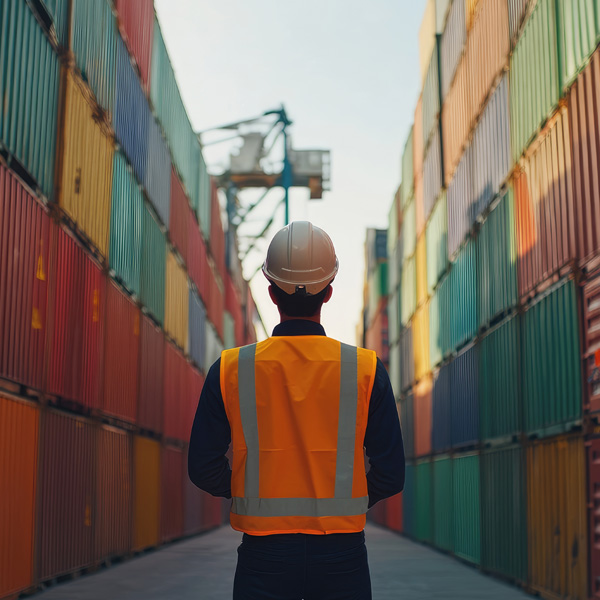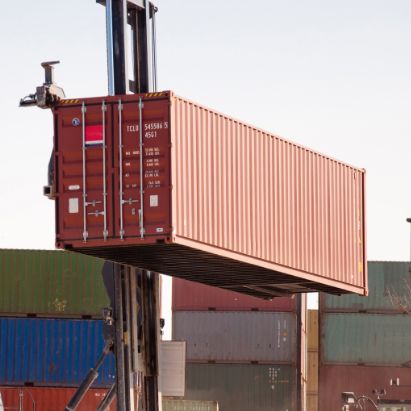March 25th, 2025 • Intermodal Containers
The Future of Transportation: How Intermodal Containers Are Shaping Logistics
The logistics industry is evolving at an extraordinary pace. With global markets expanding and consumer demands reaching unprecedented levels, efficiency and innovation have become top priorities. At the center of this revolution lies an unsung hero—intermodal containers. These standardized steel boxes have transformed global trade since their inception, and as we brace for the future of transportation, their role continues to grow in significance.
Intermodal containers aren’t just containers. They’re the backbone of a seamless supply chain, enabling goods to travel across oceans, railroads, and highways without the need for repacking. This article explores why intermodal containers are critical for the future of shipping and how they are addressing modern challenges in an industry built on efficiency and reliability.

The Rise of E-commerce and Its Impact
How E-commerce is Changing Shipping Demands
The rise of e-commerce has drastically changed shipping. Consumers now expect fast, reliable, and often free delivery, putting pressure on supply chains worldwide. The pandemic accelerated this growth, with online shopping surging by over 50% in some regions, according to McKinsey, forcing businesses to rethink transportation.
Intermodal containers are central to this shift. Their standardized design allows companies like Amazon and Alibaba to move large volumes of goods efficiently across ships, trucks, and trains.
Sustainability in Shipping
The Environmental Challenges in Shipping
Despite its critical importance, the transportation and logistics industry faces increasing scrutiny over its environmental impact. Shipping is responsible for nearly 3% of global CO2 emissions, as reported by the International Maritime Organization. Addressing these challenges requires innovative solutions—starting with intermodal containers.
The Role of Intermodal Containers in Sustainable Supply Chains
Using intermodal transport optimizes logistics routes and reduces energy consumption. Shifting freight from trucks to rail via containers, for example, can reduce greenhouse gas emissions by up to 75%, according to the EPA. Additionally, containers’ durable build allows reuse, reducing waste and the environmental toll of shipping.
Innovations in Eco-Friendly Container Design
Leading manufacturers are developing lighter, more sustainable containers using recycled or composite materials. Solar-powered reefer containers (refrigerated units) are also gaining traction, helping to lower emissions while transporting perishable goods.

Smart Containers and Technology Integration
The Age of IoT in Logistics
Technology is reshaping every industry, and logistics is no exception. Smart containers equipped with IoT (Internet of Things) sensors are revolutionizing supply chains, offering real-time data on location, temperature, humidity, and more.
Game-Changing Features of Smart Containers
Imagine having the ability to monitor your shipment across oceans remotely. Smart containers make this possible. Key features include:
- Tracking and Monitoring: Know where your goods are at any given moment.
- Temperature Control: Vital for perishable items like food or pharmaceuticals.
- Automated Alerts: Receive instant notifications about potential issues, like delays or temperature fluctuations.
Future Trends in Automation and AI
Looking ahead, AI will further optimize intermodal logistics. For instance, predictive analytics can anticipate supply chain bottlenecks before they occur. Automation will also play a significant role, with self-driving trucks integrating seamlessly with smart containers.
Would you rather talk it through? We would love to talk to you about the process and how to purchase.
Challenges in the Intermodal Supply Chain
Common Challenges and Disruptions
Despite its many advantages, intermodal logistics faces notable challenges. Port delays, customs bottlenecks, and mismanaged handling can disrupt even the best-planned supply chains. The Suez Canal blockage of 2021 serves as a stark reminder of how one incident can have a cascading effect on global trade.
Lessons Learned from Real-World Incidents
Events like the Suez Canal blockage underscore the importance of contingency planning and diversified logistics strategies. Companies are now doubling down on integrating technology to predict and mitigate risks.
Overcoming Key Challenges
Innovative solutions are already being implemented. Blockchain technology is enhancing transparency in container tracking, while AI is being used to streamline customs clearances. These advancements aim to make intermodal logistics more resilient in an unpredictable world.
Global Trends and Future Predictions
Trends Shaping Intermodal Transportation
Several trends are likely to define the future of intermodal logistics: Growing adoption of green shipping initiatives. Increasing geopolitical factors affecting trade routes and regulations. The continued rise of regionalization, with businesses focusing on local rather than global markets to reduce vulnerabilities.
What’s Next for the Industry?
Over the next 5-10 years, we can expect even greater automation across containerized shipping systems. Modular container designs may evolve, enhancing efficiency and adaptability. Additionally, digitization will become even more prevalent, with smarter systems optimizing cargo movement on a global scale.

Why Transparency in Procurement Matters
Companies like Container Chiq exemplify how transparency builds trust in an industry marked by complexities. From clear communication during the first contact to transparent pricing and flexible payment options, such approaches create confidence in customers. Innovations like Container Chiq's process help make the procurement process smoother while aligning with the dynamic demands of modern logistics.
Shaping the Future of Shipping
Intermodal containers have come a long way since their invention in the 1950s, evolving from standardized steel boxes to central pillars of modern commerce. From addressing e-commerce demands to driving sustainability and integrating cutting-edge technology, their role in logistics is more critical than ever.
The road ahead won’t be without challenges. However, with ongoing innovations and a focus on solving critical issues, intermodal transportation is well-positioned to tackle the logistical hurdles of tomorrow.
